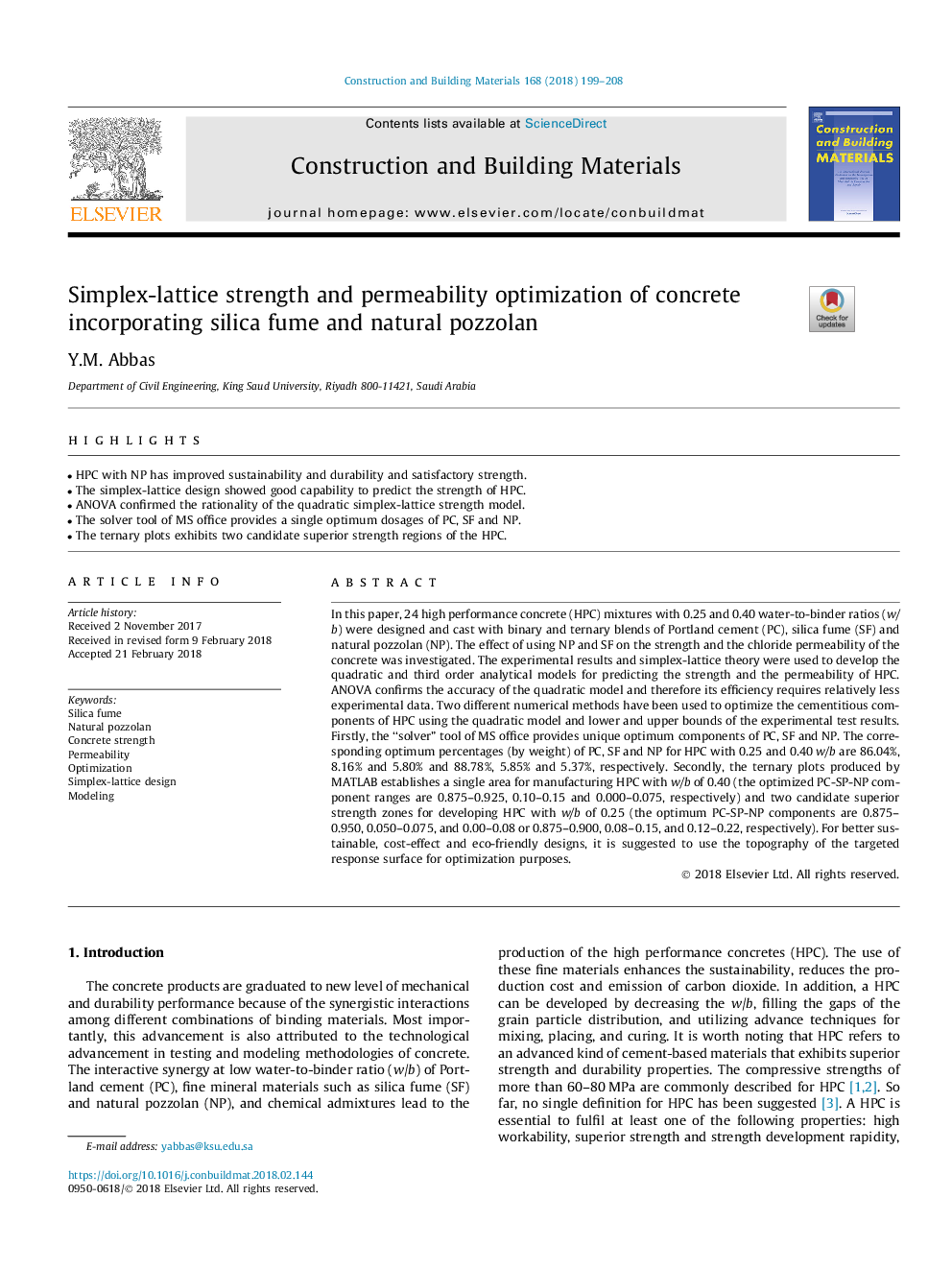| Article ID | Journal | Published Year | Pages | File Type |
|---|---|---|---|---|
| 6714769 | Construction and Building Materials | 2018 | 10 Pages |
Abstract
In this paper, 24 high performance concrete (HPC) mixtures with 0.25 and 0.40 water-to-binder ratios (w/b) were designed and cast with binary and ternary blends of Portland cement (PC), silica fume (SF) and natural pozzolan (NP). The effect of using NP and SF on the strength and the chloride permeability of the concrete was investigated. The experimental results and simplex-lattice theory were used to develop the quadratic and third order analytical models for predicting the strength and the permeability of HPC. ANOVA confirms the accuracy of the quadratic model and therefore its efficiency requires relatively less experimental data. Two different numerical methods have been used to optimize the cementitious components of HPC using the quadratic model and lower and upper bounds of the experimental test results. Firstly, the “solver” tool of MS office provides unique optimum components of PC, SF and NP. The corresponding optimum percentages (by weight) of PC, SF and NP for HPC with 0.25 and 0.40 w/b are 86.04%, 8.16% and 5.80% and 88.78%, 5.85% and 5.37%, respectively. Secondly, the ternary plots produced by MATLAB establishes a single area for manufacturing HPC with w/b of 0.40 (the optimized PC-SP-NP component ranges are 0.875-0.925, 0.10-0.15 and 0.000-0.075, respectively) and two candidate superior strength zones for developing HPC with w/b of 0.25 (the optimum PC-SP-NP components are 0.875-0.950, 0.050-0.075, and 0.00-0.08 or 0.875-0.900, 0.08-0.15, and 0.12-0.22, respectively). For better sustainable, cost-effect and eco-friendly designs, it is suggested to use the topography of the targeted response surface for optimization purposes.
Related Topics
Physical Sciences and Engineering
Engineering
Civil and Structural Engineering
Authors
Y.M. Abbas,
